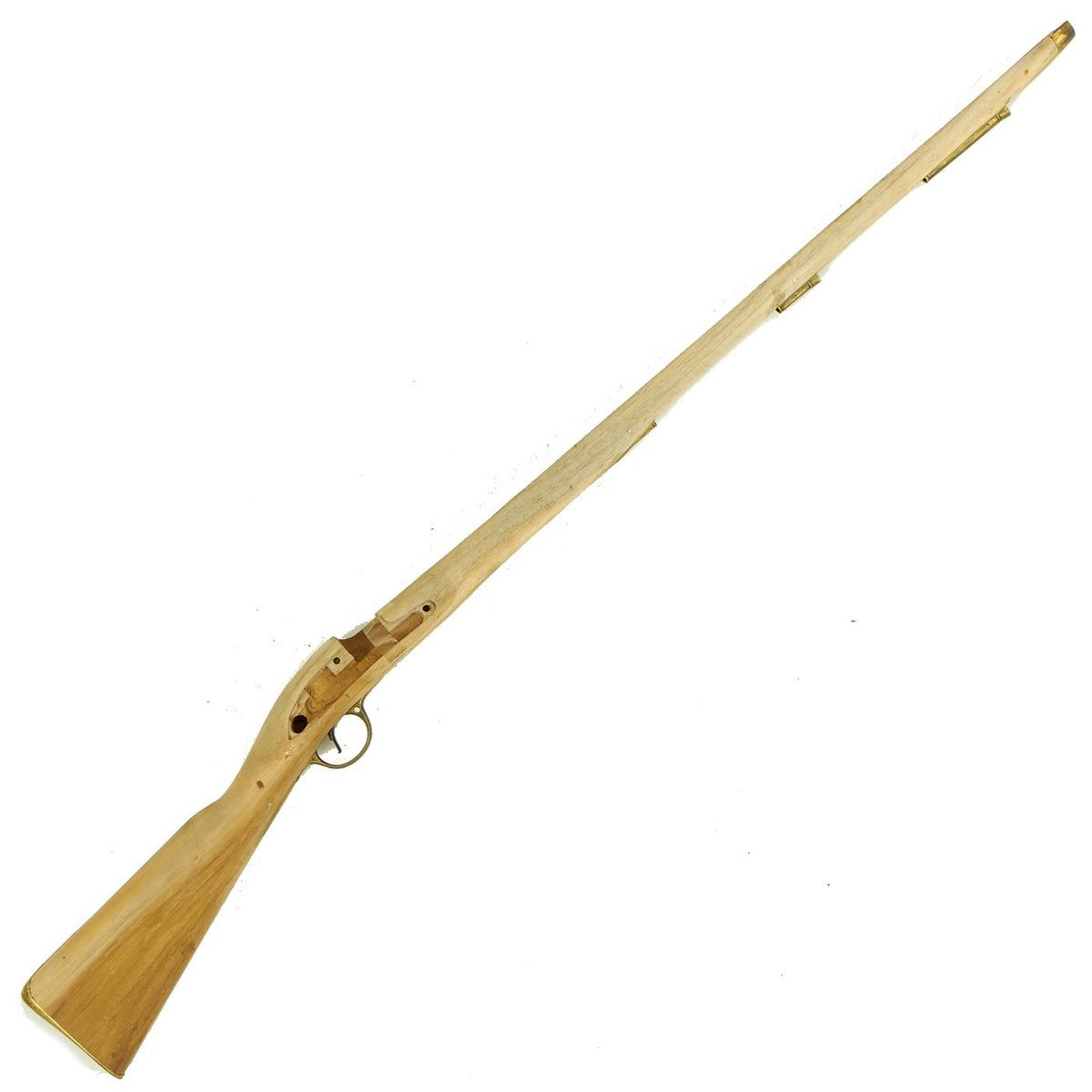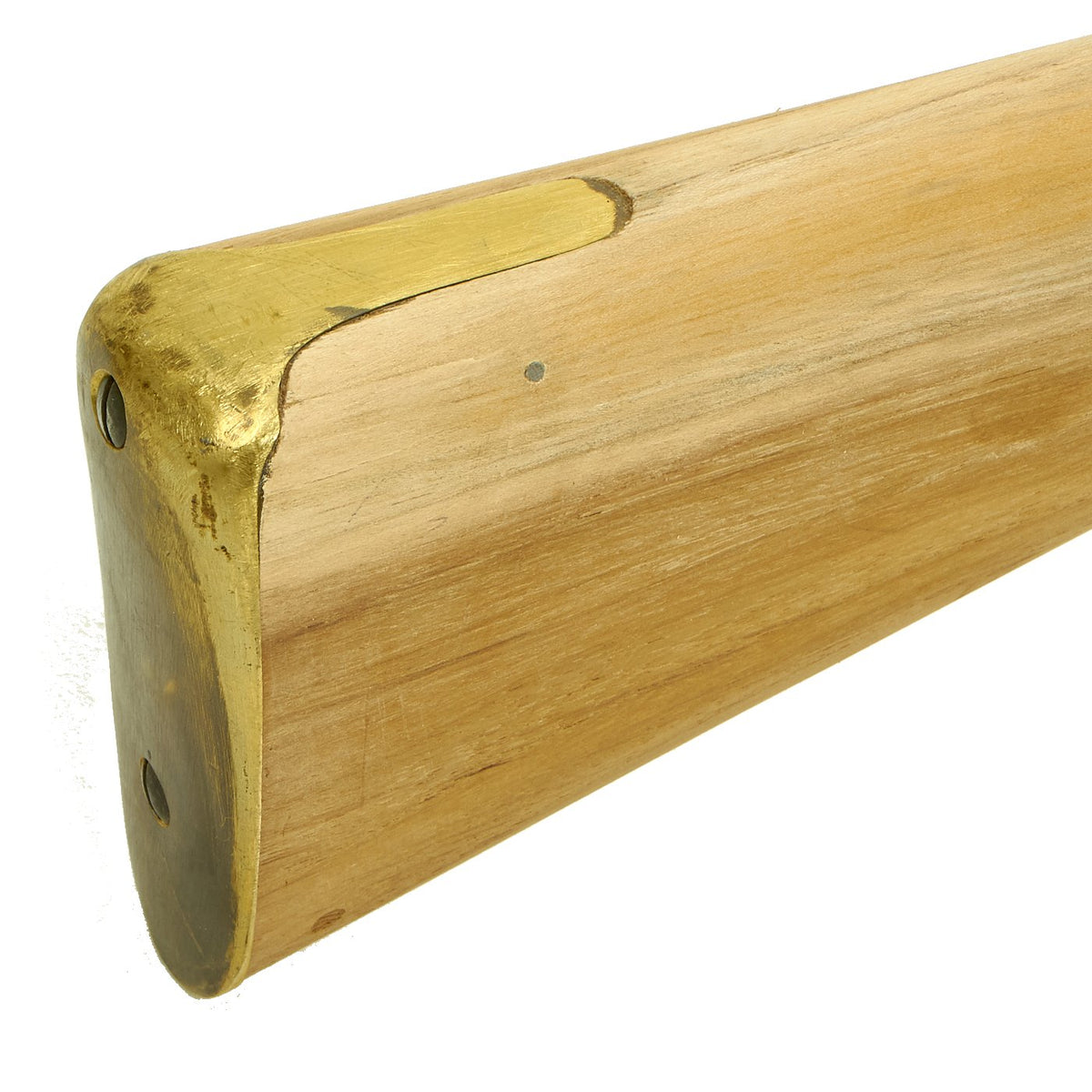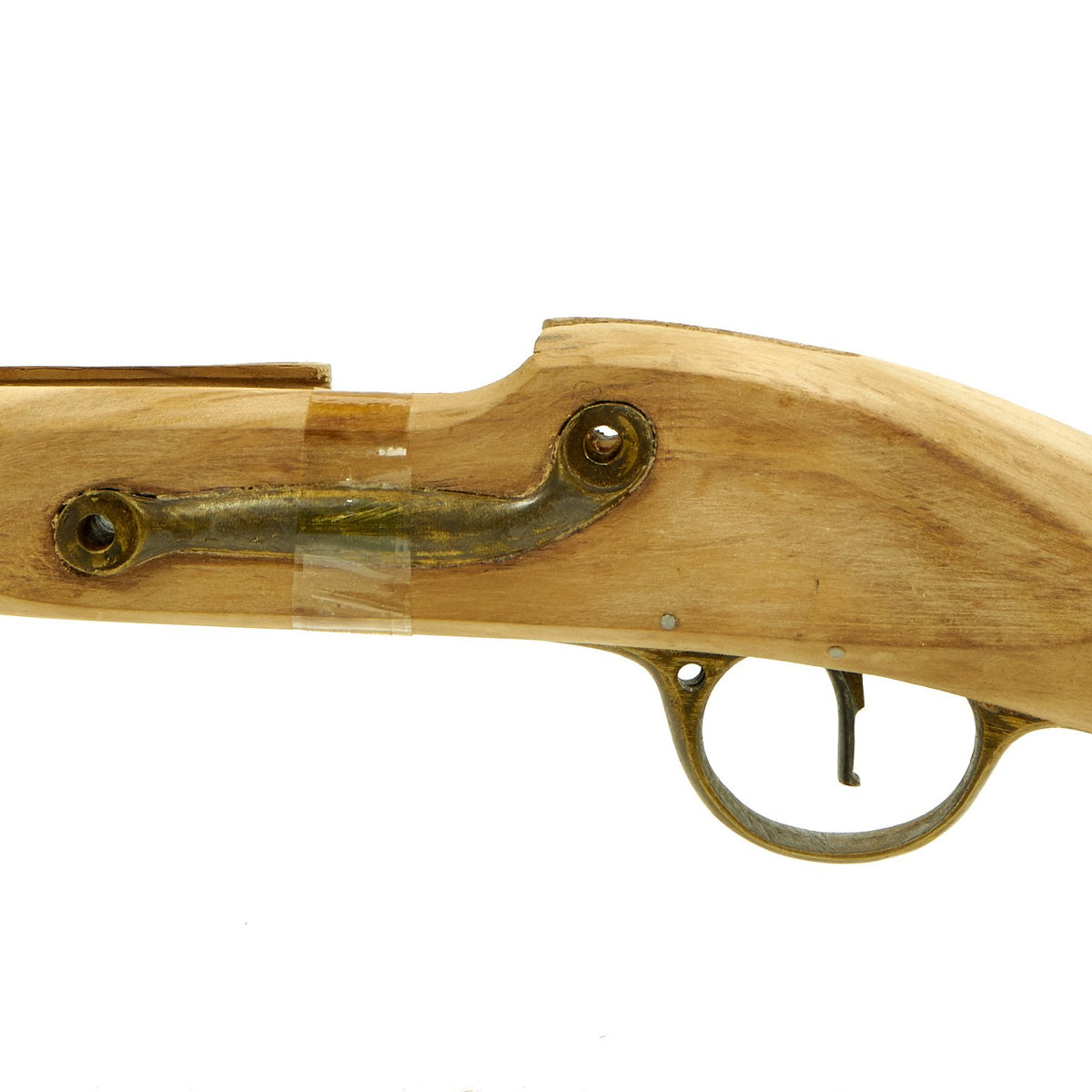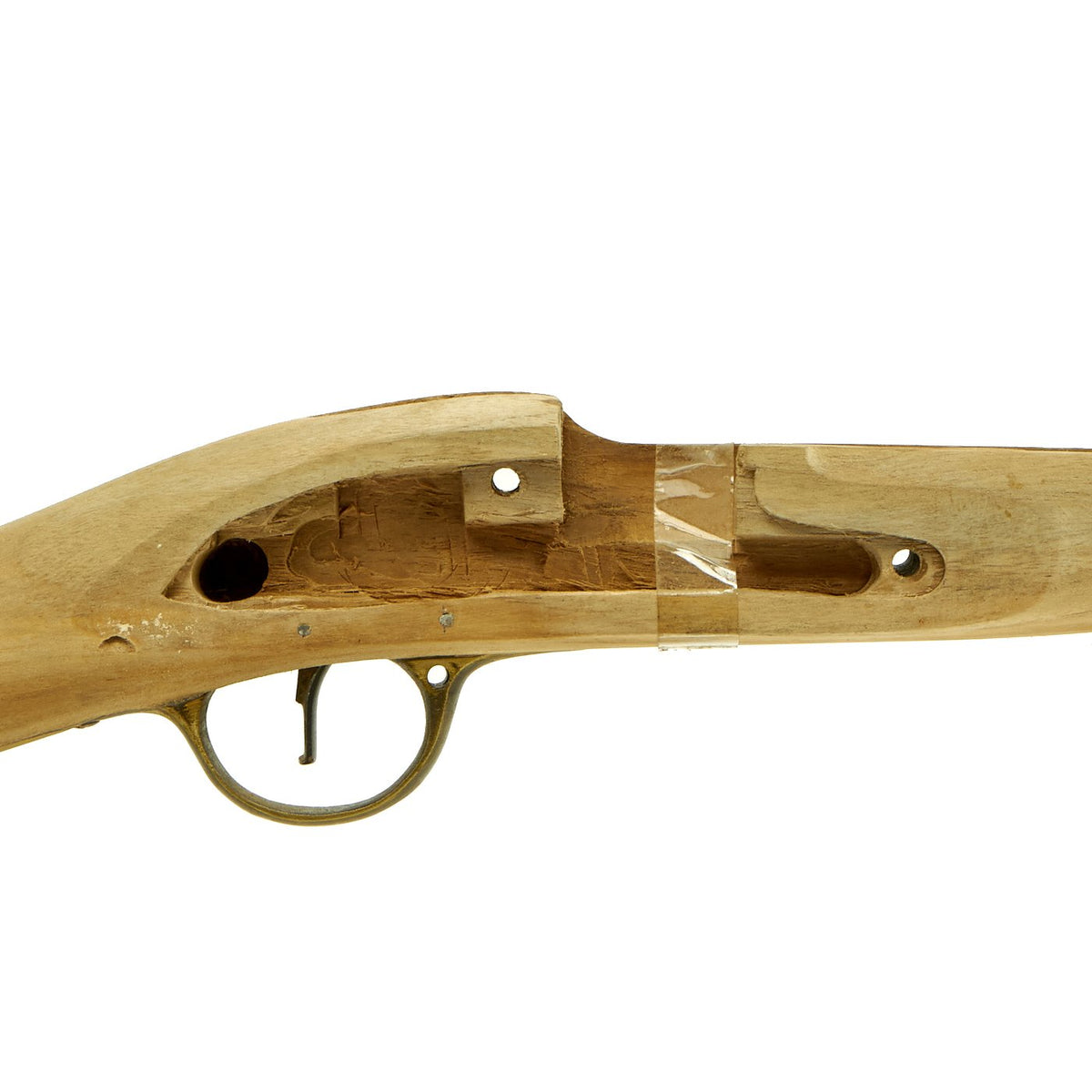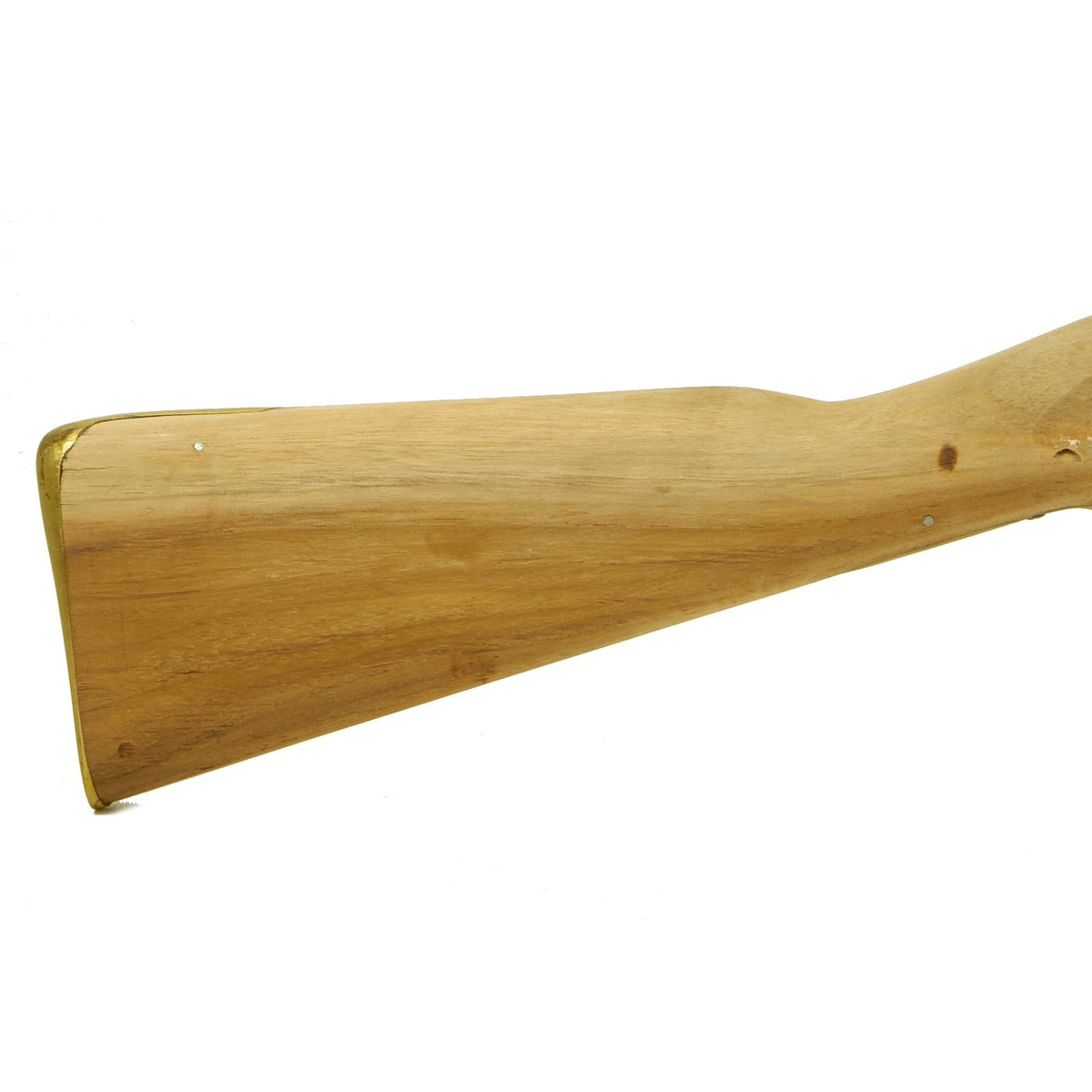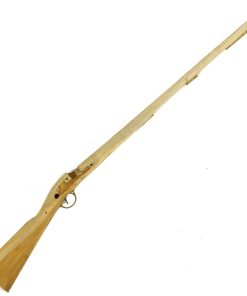British India Pattern 1808 Brown Bess Musket Replacement Hardwood Wood Stock New Made Items
$ 275,00 $ 110,00
New Made Item: High quality reproduction British India Pattern 1808 Brown Bess Musket Replacement Hardwood Wood Stock. Designed for the later pattern Third Model Brown Bess musket with a 39″ in barrel but without a banister rail butt stock, as adopted by the British is 1808. The stock is fully inleted and comes complete with brass trigger guard, brass butt plate, brass left side plate, brass nose cap, three brass ram rod pipes and trigger assembly. The inlets are cut to approximate size so custom fitting of your specific parts will be required. Wood is sanded but untreated for you to stain and finish. Approximate stock length is 51″.
“Brown Bess” is a nickname of uncertain origin for the British Army’s muzzle-loading smoothbore flintlock Land Pattern Musket and its derivatives. The musket design remained in use for over a hundred years with many incremental changes in its design. These versions include the Long Land Pattern, the Short Land Pattern, the India Pattern, the New Land Pattern Musket and the Sea Service Musket.
Many variations and modifications of the standard pattern musket were created over its long history. The earliest version was the Long Land Pattern of 1722, a 62-inch (1,575 mm) long (without bayonet) and with a 46-inch (1,168 mm) barrel. It was later found that shortening the barrel did not detract from accuracy but made handling easier, giving rise to the Militia (or Marine) Pattern of 1756 and the Short Land Pattern of 1768, which both had a 42-inch (1,067 mm) barrel. Another version with a 39-inch (991 mm) barrel was first manufactured for the British East India Company, and was eventually adopted by the British Army in 1790 as the India Pattern.
Towards the end of the life of the weapon, there was a change in the system of ignition. The flintlock mechanism, which was prone to misfiring, especially in wet weather, was replaced by the more reliable percussion cap. The last flintlock pattern manufactured was selected for conversion to the new system as the Pattern 1839. As a fire at the Tower of London destroyed large stocks of these in 1841, a new Pattern 1842 musket was manufactured. These remained in service until the outbreak of the Crimean War when they were replaced by the Minié and the P53 Enfield rifled musket.
Prompt Shipping and Professional Packaging
We provide a variety of shipping options due to our long-running partnerships with UPS, FedEx and DHL. Our warehouse personnel are well trained and will pack the goods according to our exact and precise specifications. Before shipping your items will be thoroughly inspected and secured. Every day, we deliver to thousands of customers in different countries. This is a sign of our determination to become the largest online retailer worldwide. Both Europe as well as the USA have warehouses and distribution centers.
Note that orders containing more than one item will be subject to a processing period that is based to the particular item.
Prior to shipping the items, our staff will carry out an exhaustive inspection of the products you ordered. Today, most orders will be delivered within 48 hours. The estimated delivery time is between 3-7 days.
Returns
The stock is constantly changing. It's not entirely managed by us since we are involved with multiple entities, including the factory and our storage. Therefore, the actual inventory could alter at any time. It is possible that you will not receive your order after the order has been made.
The period of time is 30 days. Unfortunately, if 30 days have passed since you purchased your product, we are unable to provide a refund or exchange.
The item must not be in use and must be in the original packaging. The item must be in the original packaging.
Related products
Uncategorized
Uncategorized
Uncategorized
Armoured Fighting Vehicles of the World: AFVs of World War One (Hardcover Book) New Made Items
Uncategorized
Uncategorized
Uncategorized
Uncategorized
Armored Burgonet Helmet & Polearm from Scottish Castle Leith Hall Circa 1700 Original Items
Uncategorized
Australian WWII Owen MK1 Machine Carbine SMG Custom Fabricated Replica with Sling Original Items
Uncategorized
Uncategorized
Uncategorized
Uncategorized
Uncategorized
Uncategorized
Uncategorized
Uncategorized
Uncategorized
Uncategorized
Uncategorized
